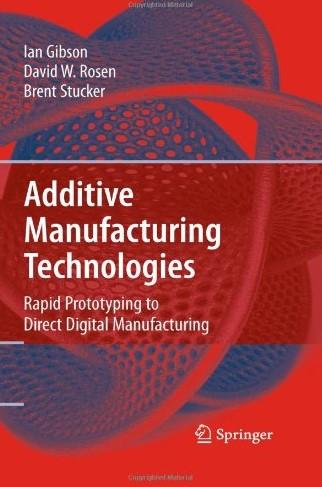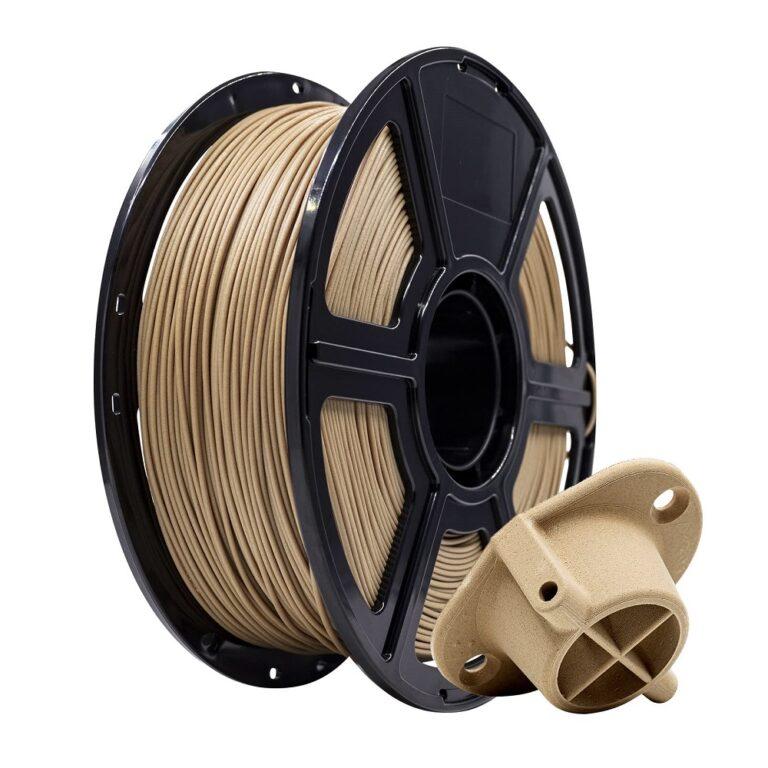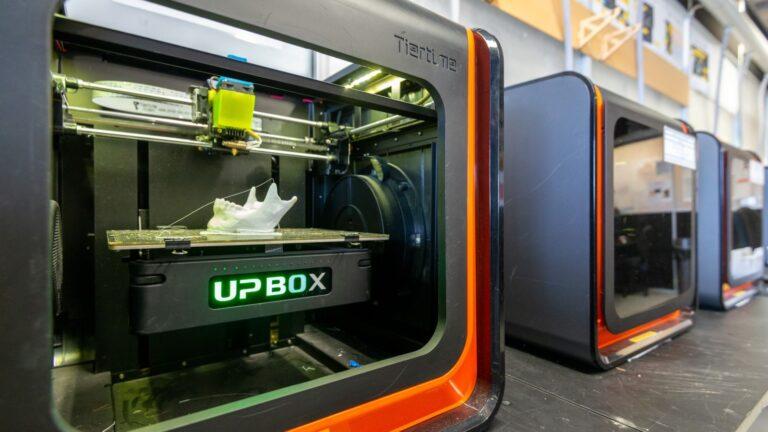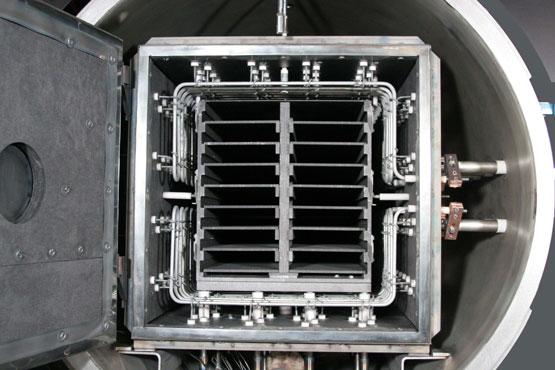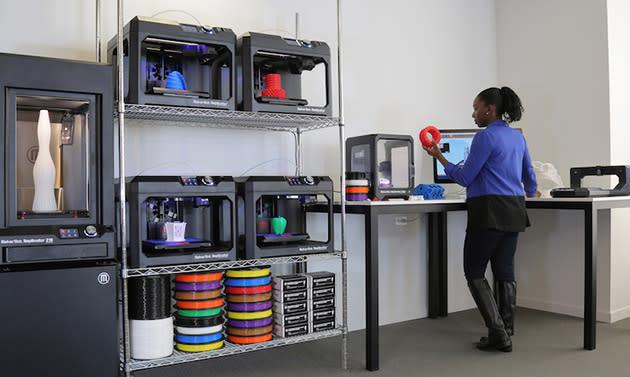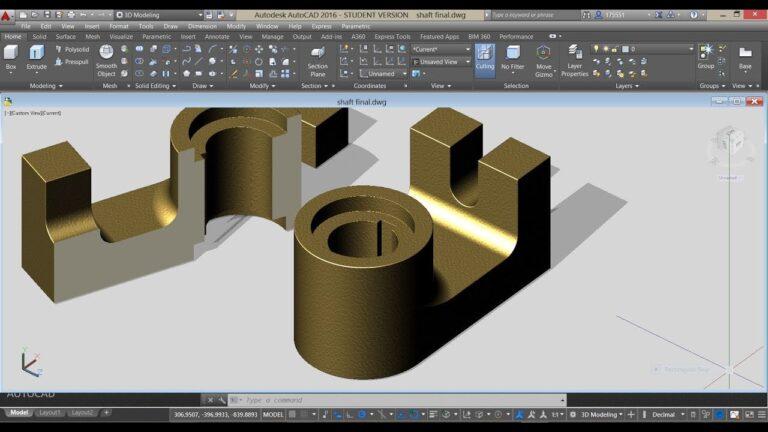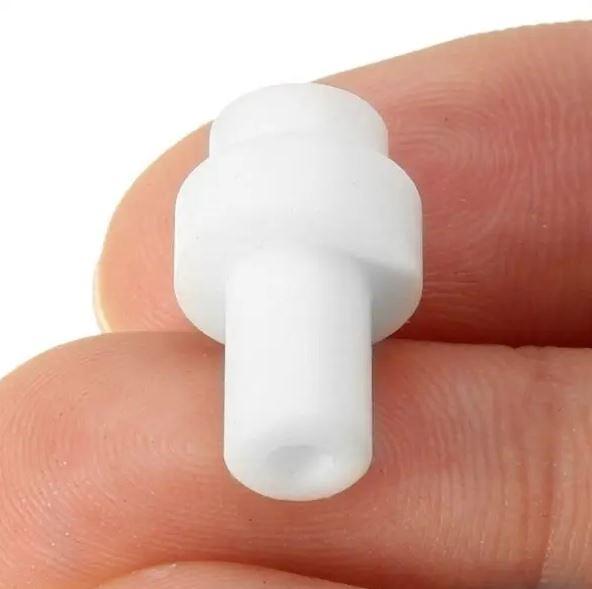A Decade of Progress: Revisiting Ian Gibson’s Additive Manufacturing Technologies book
I. Introduction
The “Additive Manufacturing Technologies book” is a pioneering reference in 3D printing and rapid prototyping. It has been influential for over a decade with over 10,000 citations on Google Scholar and nearly 2,200 on Scopus. It comprehensively covers many aspects of the technology, including foundational concepts, components, design considerations, and practical applications. Eminent experts like Ian Gibson have contributed to the book. It has influenced the additive manufacturing industry and contributed to its development and innovation.
A. Background of additive manufacturing
The history of additive manufacturing begins in the 1980s, when the idea of building objects layer by layer first developed. Charles Hull discovered stereolithography in 1984. It opened the door for 3D printing. This was a catalyst for the entire process. Fused Deposition Modeling (FDM), Selective Laser Sintering (SLS), and other technologies have been included into additive manufacturing over the years. Additive manufacturing enables mass customization, rapid prototyping, and complex geometries. These technologies have revolutionized many sectors. They make production methods more practical and less expensive. Additive manufacturing has potential to transform how goods are created, produced, and disseminated. It changes conventional production methods and creates new opportunities for creativity.
B. Overview of the book and its significance
“Additive Manufacturing Technologies” is a classic book in 3D printing and rapid prototyping.
It covers various additive manufacturing processes, materials, and applications.The book offers valuable insights for researchers, engineers, and business people. Two updated editions were published in 2014 and 2020. The book remains current with the latest research and breakthroughs. It helps readers understand the continuously changing additive manufacturing industry. The book’s content can help develop a strong foundation in 3D printing and rapid prototyping. This, in turn, aids in the industrial sector’s continual development and change.
C. Purpose of revisiting the book after a decade
The “Additive Manufacturing Technologies” book has countless citations on Google Scholar and Scopus. It’s important to revisit the book after a decade to recognize its ongoing influence. We can understand fundamental ideas, methods, and applications that have formed the industry. Rereading the book helps us recognize areas for development and appreciate progress made. The book’s ideas continue to guide ongoing study, development, and innovation. It remains a well-respected and frequently mentioned resource in the quickly changing field.
II. Fundamentals of Additive Manufacturing
The fundamentals of additive manufacturing revolve around the concept of building three-dimensional objects layer by layer, using digital models as a guide. Unlike traditional subtractive manufacturing methods, which involve cutting away material from a solid block, additive manufacturing allows for the creation of complex structures with minimal material waste. The process typically begins with a computer-aided design (CAD) file, which is then converted into a format that can be read by the 3D printer.
Various technologies are employed in additive manufacturing, such as Stereolithography (SLA), Fused Deposition Modeling (FDM), and Selective Laser Sintering (SLS), each utilizing different materials and mechanisms to achieve the desired outcome. These technologies enable rapid prototyping, on-demand production, and the creation of intricate, customized parts that were previously difficult or impossible to manufacture. As additive manufacturing continues to evolve, its fundamental principles remain at the core of this transformative technology, driving ongoing innovation and shaping the future of manufacturing.
A. Definition and history of additive manufacturing
The method of additive manufacturing, often known as 3D printing, involves successively depositing layers of material to create three-dimensional objects. This process is typically guided by digital models. When Charles Hull developed Stereolithography in the 1980s, the idea of additive manufacturing first emerged (SLA). As a result, this innovation ushered in the era of contemporary 3D printing. Fused Deposition Modeling (FDM) and Selective Laser Sintering are two examples of technologies that have been created and incorporated into the industry over time (SLS). Furthermore, by enabling quick prototyping, mass customization, and the fabrication of complicated geometries that were previously unachievable or prohibitively expensive, these breakthroughs have transformed a variety of sectors. The way things are developed, produced, and distributed is expected to change as additive manufacturing technology develops, disrupting conventional production processes and creating new opportunities for creativity.
B. Basic principles and processes involved
t its core, additive manufacturing operates on the principle of building objects layer by layer, using digital models as a blueprint. Initially, a computer-aided design (CAD) file is created, which is then converted into a format suitable for the 3D printer to interpret. Subsequently, the printer deposits material, such as plastic, metal, or ceramic, in a layer-by-layer fashion until the desired object is formed. Furthermore, various additive manufacturing technologies employ different methods for depositing material.
For instance, Stereolithography (SLA) uses a liquid resin that solidifies when exposed to ultraviolet light, while Fused Deposition Modeling (FDM) involves the extrusion of heated thermoplastic filament to form the object. Similarly, Selective Laser Sintering (SLS) utilizes a high-powered laser to fuse powdered material together. Consequently, each technology has its unique advantages and applications, depending on the required material properties and the desired level of precision. Overall, the basic principles and processes of additive manufacturing continue to drive innovation, enabling the creation of complex and customized products across various industries.
C. Comparison with traditional manufacturing methods
Additive manufacturing differs from traditional methods in several ways. Firstly, it builds objects layer by layer, minimizing waste. Conversely, subtractive manufacturing often creates excess material. Additionally, additive methods allow for complex geometries, while traditional techniques may struggle. Consequently, 3D printing enables mass customization, unlike conventional production. Lastly, additive manufacturing speeds up prototyping, streamlining design iterations. Overall, these differences make additive manufacturing a transformative technology.
III. Additive Manufacturing Technologies
The “Additive Manufacturing Technologies” book highlights various techniques in the field. Firstly, Vat Photopolymerization, such as Stereolithography (SLA), uses UV light to solidify resin layers. Secondly, Material Extrusion, like Fused Deposition Modeling (FDM), extrudes heated thermoplastics. Thirdly, Powder Bed Fusion, including Selective Laser Sintering (SLS), employs lasers to fuse powder particles. Additionally, Binder Jetting and Material Jetting involve depositing binding agents and droplets, respectively. Lastly, Sheet Lamination and Directed Energy Deposition utilize laminates and focused energy beams. Consequently, each technology offers unique advantages and applications across industries.
A. Vat Photopolymerization (e.g., Stereolithography)
Vat Photopolymerization, discussed in Chapter 4 of the book, is an additive manufacturing technique that uses UV light to solidify liquid photopolymer resin. Firstly, Stereolithography (SLA) is a prominent example. In this process, a build platform submerges into the resin vat. Subsequently, a UV laser traces the object’s cross-sectional pattern on the resin surface, solidifying it. Layer by layer, the object is formed. Consequently, SLA enables high resolution and surface finish. However, it requires post-processing, such as support removal and curing, to achieve optimal results.
B. Material Extrusion (e.g., Fused Deposition Modeling)
Material Extrusion is an additive manufacturing technique that uses material extrusion to build objects layer by layer, as described in Chapter 6 of the book. One well-known application of this method is fused deposition modeling (FDM). A thermoplastic filament is heated and extruded via a nozzle first. The nozzle then moves along the X-Y plane, depositing the material in accordance with the object’s cross-sectional pattern. The build platform lowers as the material hardens as it cools, enabling the extrusion of the subsequent layer. As a result, FDM is well suited for rapid prototyping and producing functional items, even though its surface smoothness and resolution may be worse than those of other additive manufacturing techniques.
C. Powder Bed Fusion (e.g., Selective Laser Sintering)
Powder Bed Fusion, covered in Chapter 5 of the book, is an additive manufacturing method that utilizes thermal energy to fuse powder particles. Selective Laser Sintering (SLS) is a notable example. Firstly, a thin layer of powder is spread across the build platform. Subsequently, a high-powered laser traces the object’s cross-sectional pattern, fusing the particles together. As a result, the build platform lowers, and the next powder layer is spread. Layer by layer, the object forms, embedded within the unsintered powder. Consequently, SLS produces robust parts without the need for supports, but post-processing, such as powder removal and surface finishing, is often required.
D. Binder Jetting and Material Jetting
Binder Jetting and Material Jetting, explored in Chapter 7 of the book, represent distinct additive manufacturing processes. Previously, these methods were referred to as Drop-on-Demand (DOD) mode. Firstly, Binder Jetting deposits a liquid binding agent onto a powder bed, bonding particles to create an object layer by layer. Consequently, this technique enables full-color 3D printing and produces parts with a porous structure. Secondly, Material Jetting involves the deposition of droplets, often photocurable resin, which solidify upon exposure to UV light. As a result, this process offers high resolution and smooth surface finishes, making it suitable for detailed models and prototypes. Both techniques demonstrate the versatility and innovation present in additive manufacturing.
E. Sheet Lamination and Directed Energy Deposition
Sheet Lamination and Directed Energy Deposition, discussed in Chapters 8 and 9 of the book, are unique additive manufacturing techniques. Firstly, Sheet Lamination bonds thin layers of material, such as metal or paper, using adhesive, ultrasonic welding, or heat. Consequently, this process creates objects with a laminated structure, which can be useful for certain applications. Secondly, Directed Energy Deposition focuses a high-energy beam, such as a laser or electron beam, onto a substrate, melting the material. Simultaneously, the system deposits powdered or wire feedstock, fusing it with the substrate. As a result, this method is well-suited for repairing, coating, or building large metal parts. Both techniques showcase the diverse range of technologies available in additive manufacturing.
IV. Materials for Additive Manufacturing
Materials for Additive Manufacturing, covered in Chapters 5-9 of the book, play a crucial role in determining the properties and applications of 3D printed objects. Firstly, thermoplastics, such as ABS and PLA, are commonly used in processes like FDM due to their low melting points and ease of processing. Secondly, photopolymers, which solidify under UV light, are suitable for SLA and Material Jetting techniques. Additionally, metal powders, such as titanium and stainless steel, enable the production of strong, functional parts in Powder Bed Fusion processes like SLS and Direct Metal Laser Sintering (DMLS). Lastly, ceramic and composite materials offer unique properties, such as high strength and temperature resistance, expanding the range of applications for additive manufacturing. Consequently, the choice of materials directly impacts the performance and potential uses of 3D printed parts.
A. Photopolymers for vat photopolymerization
Photopolymers for Vat Photopolymerization, covered in Chapter 4 of the Additive Manufacturing Technologies book, are crucial components of SLA and digital light processing (DLP). These light-sensitive polymers harden when exposed to UV light, allowing the production of delicate, highly detailed parts. First off, photopolymers are available in a range of formulas, including conventional, flexible, and high-strength alternatives. As a result, a wide range of applications, from prototyping to finished components, are made possible by the diversity of the materials. The effectiveness and applicability of a particular photopolymer for a particular application are further influenced by elements including viscosity, curing time, and mechanical qualities. In order to get the required outcomes in additive manufacturing, it is essential to comprehend and choose the right photopolymer for Vat Photopolymerization methods.
B. Thermoplastics for material extrusion
Thermoplastics for Material Extrusion, covered in Chapter 6 of the book, are widely used materials in processes like FDM and other extrusion-based additive manufacturing techniques. These materials have the unique ability to soften when heated and harden upon cooling. Firstly, popular thermoplastics include ABS and PLA, which offer a balance between ease of processing and mechanical properties. Consequently, they cater to a range of applications from rapid prototyping to functional parts. Secondly, other thermoplastics, such as PETG, TPU, and nylon, provide specialized properties like chemical resistance, flexibility, or high strength. As a result, understanding the characteristics and proper use of various thermoplastics is essential for optimizing Material Extrusion processes and ensuring the success of 3D printed projects.
C. Metals, ceramics, and polymers for powder bed fusion
Metals, ceramics, and polymers for Powder Bed Fusion, discussed in Chapter 5 of the Additive Manufacturing Technologies book, offer a diverse range of materials suitable for processes like SLS, DMLS, and Multi Jet Fusion (MJF). Firstly, metal powders, including stainless steel, titanium, and aluminum, enable the production of strong, functional parts with complex geometries. Consequently, these materials cater to industries like aerospace, automotive, and medical, where high-performance components are essential. Secondly, ceramics, such as alumina and zirconia, provide high strength, wear resistance, and temperature resilience, expanding the applications of additive manufacturing. Lastly, polymers like nylon (polyamide) are also used in Powder Bed Fusion, providing a lightweight and versatile option for creating intricate parts. As a result, understanding the properties and capabilities of these materials in Powder Bed Fusion processes is vital for achieving optimal results in 3D printing projects.
D. Binders and materials for binder jetting and material jetting
Binders and materials for Binder Jetting and Material Jetting, explored in Chapter 7 of the book, represent a unique class of additive manufacturing processes. Firstly, Binder Jetting involves the deposition of a liquid binding agent onto a powder bed, bonding particles to create an object layer by layer. Consequently, this technique offers the flexibility to create full-color 3D printed parts and produce objects with a porous structure. Secondly, Material Jetting involves the deposition of droplets of photocurable resin, which solidify upon exposure to UV light, enabling high-resolution printing and smooth surface finishes. These techniques were previously referred to as Drop-on-Demand (DOD) mode. Consequently, understanding the composition and properties of binders and materials used in Binder Jetting and Material Jetting processes is crucial for achieving optimal results in 3D printing projects.
E. Laminates and other materials for sheet lamination and directed energy deposition
Laminates for Sheet Lamination, covered in Chapter 8 of the Additive Manufacturing Technologies book, involve cutting and bonding layers of sheet material to create a 3D printed object. These materials can range from paper to metals, offering a wide range of properties and applications. Sheet Lamination is often used for creating large parts with low detail but high strength requirements.
Directed Energy Deposition, discussed in Chapter 9 of the book, involves the use of a focused energy source, like a laser or electron beam, to melt and fuse material onto a substrate layer by layer. This technique enables the production of complex geometries and high-quality metal parts. Materials for Directed Energy Deposition include metals like titanium, nickel, and aluminum, as well as some ceramics and polymers. The suitability of a specific material for this process depends on its melting point, thermal conductivity, and other properties.
It is essential to note that Sheet Lamination and Directed Energy Deposition are distinct additive manufacturing techniques and should not be confused. Understanding the properties and proper use of materials for each process is vital for successful 3D printing projects.
V. Design Considerations and Software
Design Considerations and Software are critical factors in the success of an additive manufacturing project. Proper design is essential to optimize the 3D printing process and ensure the structural integrity of the final product. Various software tools are available for designing and preparing models for 3D printing. The book covers these tools in several chapters, including Chapter 11, which discusses CAD software, and Chapter 12, which explores slicing software. Familiarity with these software tools and design considerations can help reduce errors and improve the efficiency and accuracy of 3D printing projects.
In addition to the software tools mentioned above, Chapter 13 of the book discusses simulation software for additive manufacturing. These technologies can forecast and improve the behavior of printed items, enabling the detection of potential problems and design improvement before printing. In addition to saving time and resources, this can raise the standard of the finished product. Hence, a solid understanding of software tools, particularly simulation software, is needed for successful 3D printing.
A. Computer-Aided Design (CAD) for additive manufacturing
To produce digital models of 3D items, additive manufacturing frequently uses computer-aided design (CAD) software. The use of CAD software for additive manufacturing is the subject of Chapter 11 of the Additive Manufacturing Technologies book, which also discusses the concepts of 3D modeling, meshing, and the transformation of digital models into actual items. CAD software is made to produce elaborate and complicated designs, and it may be used to optimize the design for 3D printing by reducing the need for support structures and improving the object’s orientation. In conclusion, CAD software is an essential tool for additive manufacturing since it enables the construction of precise and intricate 3D models that can be effectively prepared for 3D printing.
B. Design rules and guidelines for various technologies
Design rules and guidelines are critical considerations for additive manufacturing projects, as different technologies have their unique design requirements. Chapter 11 of the book covers these rules and guidelines for various additive manufacturing technologies, including Vat Photopolymerization, Material Extrusion, Powder Bed Fusion, Binder Jetting, Material Jetting, Sheet Lamination, and Directed Energy Deposition. For instance, design guidelines for Vat Photopolymerization include considerations such as support structures and minimum feature size. Similarly, for Material Extrusion, guidelines for designing overhangs and undercuts are essential. These rules and guidelines ensure the successful production of high-quality parts using additive manufacturing technologies.
C. Software tools for simulation and optimization
Software tools for simulation and optimization are crucial in achieving optimal results in additive manufacturing. In Chapter 13 of the book, various software packages for simulating the additive manufacturing process and optimizing the designs are discussed. These tools enable the designer to predict and evaluate the structural integrity, dimensional accuracy, and mechanical performance of the final product. Finite element analysis (FEA) is also covered in Chapter 17.
D.slicing software
Slicing software is an important tool for preparing a digital model for 3D printing. It breaks down the model into layers and generates instructions for the 3D printer to create each layer. The book discusses different slicing software options in Chapter 12, including their capabilities and limitations. It also provides guidelines for selecting the appropriate slicing software based on the specific 3D printing technology and desired outcome.
VI. Post-processing and Finishing Techniques
Post-processing and Finishing Techniques are important steps in additive manufacturing. These processes improve the quality and functionality of 3D printed parts. The book covers several post-processing techniques, including cleaning, sanding, and polishing, in Chapter 16. Proper post-processing and finishing techniques can enhance the performance and aesthetics of the final product.
A. Support removal and cleaning
Support removal and cleaning are important post-processing steps in additive manufacturing. Supports are structures used to hold up overhanging parts during printing, but they must be removed once printing is complete. This can be done manually or with the help of support removal tools, such as pliers or cutting tools. After support removal, cleaning is necessary to remove any leftover debris or residue on the printed part. This can be done through various methods, including sandblasting or chemical cleaning. Proper support removal and cleaning techniques can help ensure the final product is free of defects and meets the desired specifications. The book Additive Manufacturing Technologies covers these techniques in detail in Chapter 16.
B. Surface finishing methods
Surface finishing is an important post-processing step in additive manufacturing that can improve the overall appearance, durability, and functionality of printed parts. The book covers various surface finishing methods in Chapter 16, including sanding, polishing, painting, and coating. Each of these methods has its own advantages and disadvantages depending on the material and application. For example, sanding is effective for removing rough surfaces and creating smooth finishes, while coating can provide added protection and durability. Understanding the properties and limitations of each method can help manufacturers choose the appropriate surface finishing technique for their specific needs.
C. Heat treatment and other post-processing steps
Heat treatment and other post-processing steps are crucial for achieving the desired mechanical properties and surface finish in additive manufacturing parts. The heat treatment involves exposing the printed parts to high temperatures, which can help relieve residual stresses, enhance mechanical properties, and improve dimensional stability. Other post-processing steps include surface treatment, coating, and polishing. The book covers various post-processing techniques in Chapter 16 and provides guidelines for selecting the appropriate techniques based on the material and application. Proper post-processing steps can significantly improve the quality and functionality of additive manufactured parts.
VII. Applications and Case Studies
The aerospace, automotive, and medical industries are just a few that have used additive manufacturing. It has gained popularity in the aerospace and automotive industries due to its capacity to produce complex geometries and lightweight structures. The capacity to design implants and prosthetics specifically for a patient has revolutionized medicine. Case studies and applications of additive manufacturing in many industries are covered in the book “Additive Manufacturing Technology.” Case studies of how 3D printing has been used to make dental implants, prosthetic limbs, and even fake organs are presented in the book’s chapter 15 on medical applications. The uses of additive manufacturing are virtually limitless because to its capacity for customization and the creation of complicated structures.
A. Product development
Product development is a crucial process that involves various stages, from conceptualization to market launch. Additive manufacturing has revolutionized this process by enabling rapid prototyping and iteration of designs. The book covers the various aspects of product development using additive manufacturing, including design considerations, material selection, and post-processing. Chapter 18 delves into case studies and examples of successful product development using additive manufacturing techniques. By leveraging the capabilities of additive manufacturing, companies can reduce their time-to-market and bring innovative products to customers faster than ever before.
B. Direct digital manufacturing for end-use products
Direct digital manufacturing (DDM) is a process of producing finished parts directly from a digital design file, without the need for any intermediate tooling. DDM is often used for low-volume production, complex parts, or parts that require customization. The book covers DDM extensively in Chapter 14, including a discussion of various techniques such as laser sintering and fused deposition modeling. With DDM, companies can save time and money by eliminating the need for tooling and reducing the number of production steps. However, it requires expertise in digital design and additive manufacturing processes to be successful. The chapter also highlights some challenges and limitations of DDM, such as the need for high-quality material and equipment, as well as the need for post-processing steps to achieve the desired surface finish and mechanical properties.
VIII. Future Trends and Conclusion
New technologies and materials are continually being developed in the field of additive manufacturing. The book’s last chapter(18) discusses some of the upcoming trends in the industry, such as improvements in multi-material printing and the use of 3D printing for mass production. The chapter concludes with a summary of the book’s main ideas and the significance of additive manufacturing in contemporary industry. Additive manufacturing is projected to become even more popular and significant in a variety of sectors as technology advances.
A. Advancements in materials and processes
Additive manufacturing is constantly advancing with the development of new materials and processes. Materials such as advanced polymers, composites, and metals have enabled the production of stronger, more durable, and more complex structures. Additionally, advancements in processes such as multi-material printing and high-speed printing have improved the efficiency and capabilities of 3D printing. These advancements are expected to continue and expand the applications of additive manufacturing in various industries.
B. Environmental and sustainability considerations
Environmental and sustainability concerns have grown in importance in the world of manufacturing, and additive manufacturing is no exception. Among the top issues facing the sector are the usage of biodegradable materials, recycling of used products, and waste reduction. The authors examine the significance of sustainability in additive manufacturing in the book’s last chapter and offer instances of how businesses are putting sustainability practices into reality.
C. Emerging applications and industries
Additive manufacturing has created new opportunities in a number of sectors, including aerospace, healthcare, and automotive. It is a useful tool in research and development since it can quickly and simply generate complicated and customizable pieces. The book discusses a number of new applications and sectors that are using additive manufacturing, such as aerospace manufacturing and sophisticated prosthetics and implants in healthcare.
D. The future of additive manufacturing
With new developments in materials and procedures constantly emerging, the future of additive manufacturing is bright. The industry will advance thanks to the ability to produce bigger, more intricate parts as well as the incorporation of AI and machine learning. The future of additive manufacturing and its potential influence on conventional production techniques are covered in the book’s last chapter.
E. Concluding thoughts on the book’s continued relevance
This book continues to be an invaluable resource for people looking to learn more about the area of additive manufacturing as it develops and grows. It is a crucial resource for researchers, engineers, and business executives due to its thorough coverage of materials, methods, and applications. The book’s enduring relevance is evidence of the significance of additive manufacturing in contemporary manufacturing techniques.

